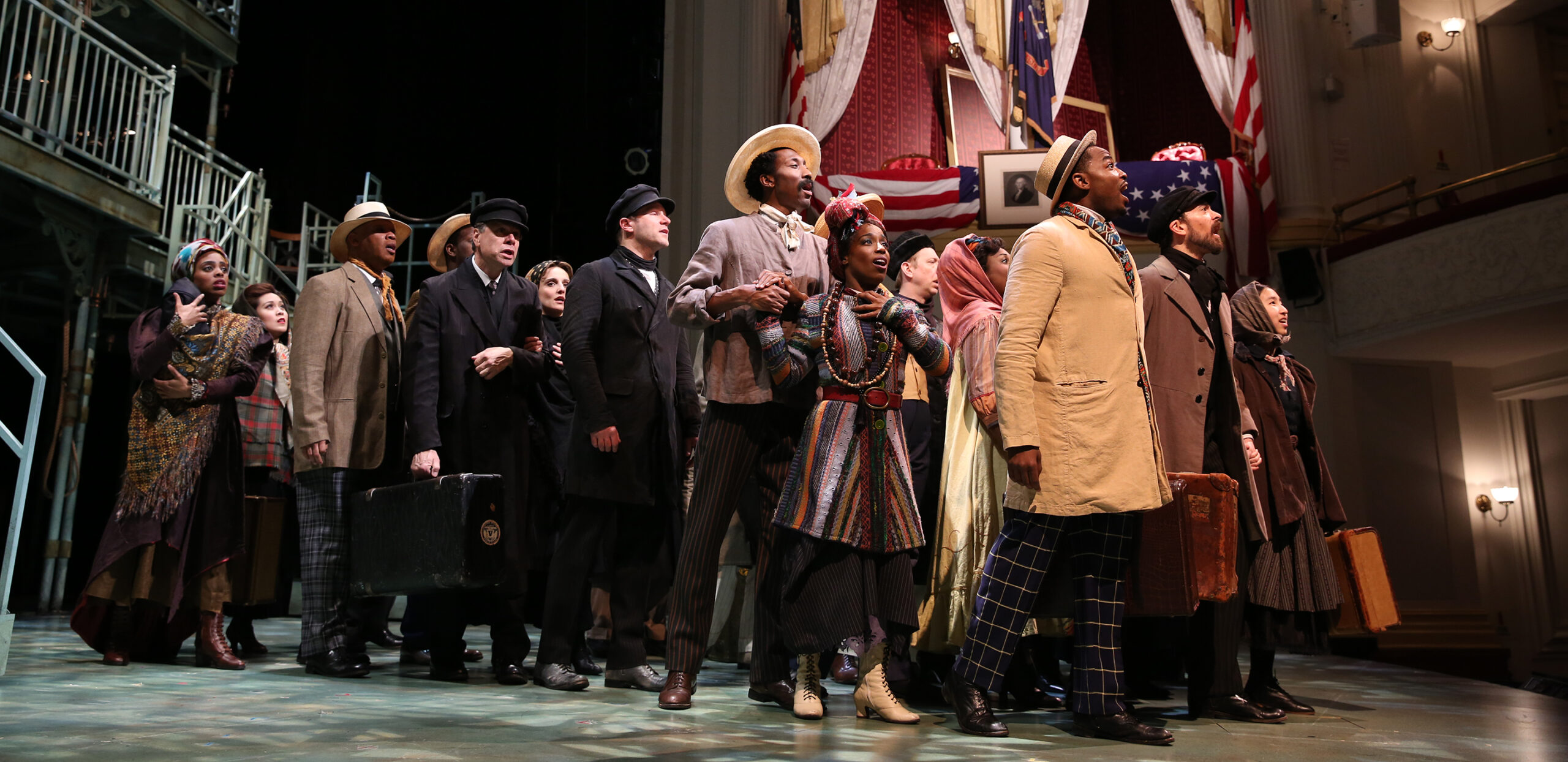
A History of Ragtime
After listening to The History of Ragtime podcast with jazz expert Rob Bamberger, students will analyze primary source recordings and find connections with contemporary genres and social history.
This classroom resource will help students understand and appreciate the music styles used in the classic American musical Ragtime, based on the novel by E.L. Doctorow.
Common Core Standards
CCSS.ELA-LITERACY.SL.7.2 and CCSS.ELA-LITERACY.RH.9-10.2
Analyze the main ideas and supporting details presented in diverse media and formats (e.g., visually, quantitatively, orally) and explain how the ideas clarify a topic, text, or issue under study.
Determine the central ideas or information of a primary or secondary source; provide an accurate summary of how key events or ideas develop over the course of the text.
| LEARNING OBJECTIVES | Understand how the history of American art forms like ragtime influenced culture, politics, and social hierarchies. |
| GUIDING QUESTIONS | What are the origins of ragtime?How was ragtime experienced?In what ways did ragtime affect American society? |
| PREPARED BY | GRADE | LENGTH |
| Jennie Berman Eng | 7-12 | 50-minute |
Classroom Activities
- Lesson Activity One: The History of Ragtime Music
Students listen to The History of Ragtime podcast with Rob Bamberger. - Lesson Activity Two: Draw Connections
Students discuss and draw connections to how Ragtime is still relevant today. - Lesson Activity Three: Listen & Create
Students use ragtime music as inspiration for an original writing activity. - Lesson Activity Four: Post-writing Discussion
Classroom Activity One
The History of Ragtime Music,10 minutes
Play the podcast, and ask students to write down one key point about ragtime music or the era.
Classroom Activity Two
Two: Post Podcast Discussion, 15 minutes
Lead your students in an open discussion of what they’ve just heard.
Discussion questions:
- What was something surprising to you about ragtime music?
- How differently is music experienced today than in turn-of-the-century America?
- What can we learn about America through music history?
- Ragtime was as much a social movement as a musical one. Can you see any similarities between ragtime and current music movements? Rock? Jazz? Hip hop? How do these movements begin?
- How does race figure in to the history of music in America? How have minority cultural traditions been co-opted by dominant populations?
*Optional: Project the Accompanying images from our Ragtime Gallery.
Classroom Activity Three
Music-inspired Free Writing, 10 min
Play Maple Leaf Rag, and Frog Legs Rag.
Ask students to listen to the music and to write freely. They should write whatever comes to mind, without constraint and without a desired outcome. Suggest they keep their pens moving throughout the whole song(s). They can continue through to the next song, or you can stop and discuss.
Optional: Suggest students take what they’ve written and “rag it”, meaning play with writing a story out of order, changing the perspective or creating some other disruption to a regular narrative.
Classroom Activity Four
Post-Writing Discussion, 5 minutes
Lead your students in an open discussion.
Discussion questions:
- How did the music influence your thoughts and what you wrote?
- What feeling states did you feel while writing?
- How did the varying melodies shape your writing?
*Optional: Have students read aloud a portion of what they wrote during the free-write.
